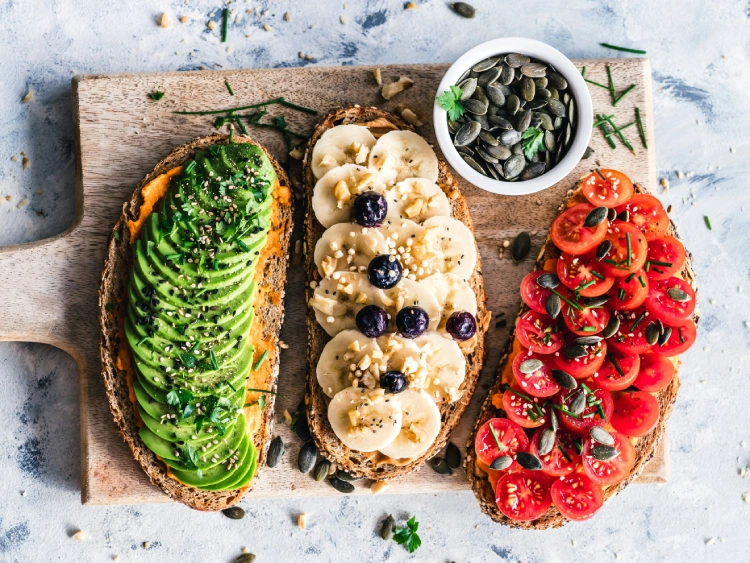Gluten-Free Food Trends on TikTok: Are They Safe, or Just Clickbait?
TikTok’s #FoodTok and #TikTokFood hashtags have exploded, with millions of posts under each tag covering everything from whipped coffee to viral gluten‑free recipes.
Among these, gluten‑free food trends – from cloud bread to Tanghulu – are circulating rapidly. But the big question remains – are these trends safe or just clickbait?
If you’re curious whether jumping on these trends is safe, or if you’re experimenting with gluten-free recipes, this article dives into the risks, the potential benefits, and what experts say you should really know.

Photo by Ella Olsson on Unsplash
Table of Contents
Why TikTok Drives the Gluten‑Free Hype
TikTok thrives on speedy visuals and bold claims. A single video with an eye-catching recipe can amass millions of views overnight, pushing users to try it – and often without double checking the ingredients.
Combined with rising consumer interest in gluten-free items, TikTok becomes a powerful catalyst for gluten‑free experimentation.
But social media virality can misrepresent conveniences or health benefits, often masking nutritional shortcomings or misleading labels.
What Nutrition Experts Are Saying
Contrary to popular perception, wearing the gluten‑free label doesn’t make a product healthier. Many gluten‑free snacks are high in sugar, fat, or sodium and low in fiber or protein – of course, us gluten-free foodies have long known that.
One study found that most gluten‑free packaged foods have less protein and more calories than their gluten-containing counterparts, so they aren’t as healthy as many think.
That doesn’t mean gluten‑free diets are harmful if they are medically necessary. Individuals with celiac disease (~1% of the population) or non‑celiac gluten sensitivity (6–10%) benefit from the elimination of gluten.
But those without these conditions often do not gain health benefits – and may even risk nutritional deficiencies, especially if they rely heavily on processed gluten‑free foods.
TikTok Gluten-Free Trends: Popular, But Not Always Balanced
Many trending TikTok recipes, like gluten‑free fluff pancakes or viral tortilla wraps, use refined starches, xanthan gum, or sweeteners to mimic texture. While fun and visually appealing, these ingredients often fall short nutritionally.
Cultures are also trending practical swaps: ancient grains like buckwheat or chickpea flour offer more protein and fiber than standard gluten‑free flours, but are rare in viral videos.
Modern baking trends include fermentation and high-protein flours that improve digestibility and nutrient density, but they don’t garner flashy views like TikTok “hacks”.
Are These Trends Safe?
For most people, occasionally trying a TikTok gluten‑free recipe is safe as long as:
- You don’t rely on processed versions as meal staples.
- You balance your diet with whole foods rich in fiber, protein, and micronutrients.
- You confirm your own medical status (e.g., celiac, NCGS) and consult healthcare professionals before going fully gluten‑free.
- You read labels carefully, looking beyond “gluten‑free” to nutritional info and certifications.
Global Market Growth & Consumer Habits
Numbers show that gluten-free products aren’t just TikTok trends – they’re a booming market.
In 2024, the global gluten‑free product market clocked in at around US$7.75 billion, and it’s projected to grow to ≈ $13.7 billion by 2030 at a 10% CAGR.
Plant-based and clean-label gluten-free products are rising sharply, and the snack, beverage, and meal-kit categories grew by ~18% in 2023 alone.
These trends reflect consumer demand for convenience and perceived health benefits, influenced heavily by social platforms like TikTok.
Hidden Nutritional Risks: What to Watch
- Overconsumption of processed gluten-free goods can lead to excessive fat, sugar, and sodium intake, often without fortification of iron or B vitamins.
- A strict gluten-free diet without dietitian oversight can lead to nutrient deficiencies, especially iron, fiber, folate, calcium, and B vitamins.
- Non-medical adoption of gluten-free trends may mask underlying conditions or delay diagnosis of true gluten-related issues, such as celiac disease.
Photo by Natasha Levai on Unsplash
How to Make TikTok Trends Smarter Food Choices
Follow this checklist:
- Treat TikTok recipes as inspiration – not a complete meal plan.
- Incorporate whole gluten-free grains like quinoa, millet, or buckwheat for added nutrients.
- Balance macros: combine trends with protein (beans, eggs, seeds) and fibrous produce.
- Read labels: gluten-free doesn’t always mean low‑sugar or fortified.
- Consult nutrition professionals if planning long-term gluten avoidance.
Trendy ≠ Healthy
TikTok can be a flavorful launchpad for gluten‑free recipe ideas, but it doesn’t guarantee balanced nutrition or scientific accuracy.
If you’re experimenting, use it wisely – prefer whole ingredients, watch labels closely, and don’t assume “gluten‑free” is healthier by default.
For those seeking specialized gluten-free ingredients, especially those not readily available locally, exploring international online retailers can sometimes offer a wider selection and potentially better pricing.
Gluten-free products can get expensive, so having a VPN subscription to browse these international sites can, in some cases, offer access to deals or avoid region-based price differences, so give it a try.
For those with celiac disease or diagnosed sensitivities, gluten-free is essential – and newer trends using ancient grains or fermented products may enhance both taste and health.
Final Thoughts
The majority of users adopting gluten-free diets without medical reasons may not benefit – and in fact, face potential downsides.
So yes, gluten-free trends can be safe as long as they’re treated as entertainment, not dietary gospel. Leave the clickbait tips behind, prioritize nutrient-rich options, and approach online trends with a thoughtful mindset.
Photo credit
Photo by Ella Olsson on Unsplash
